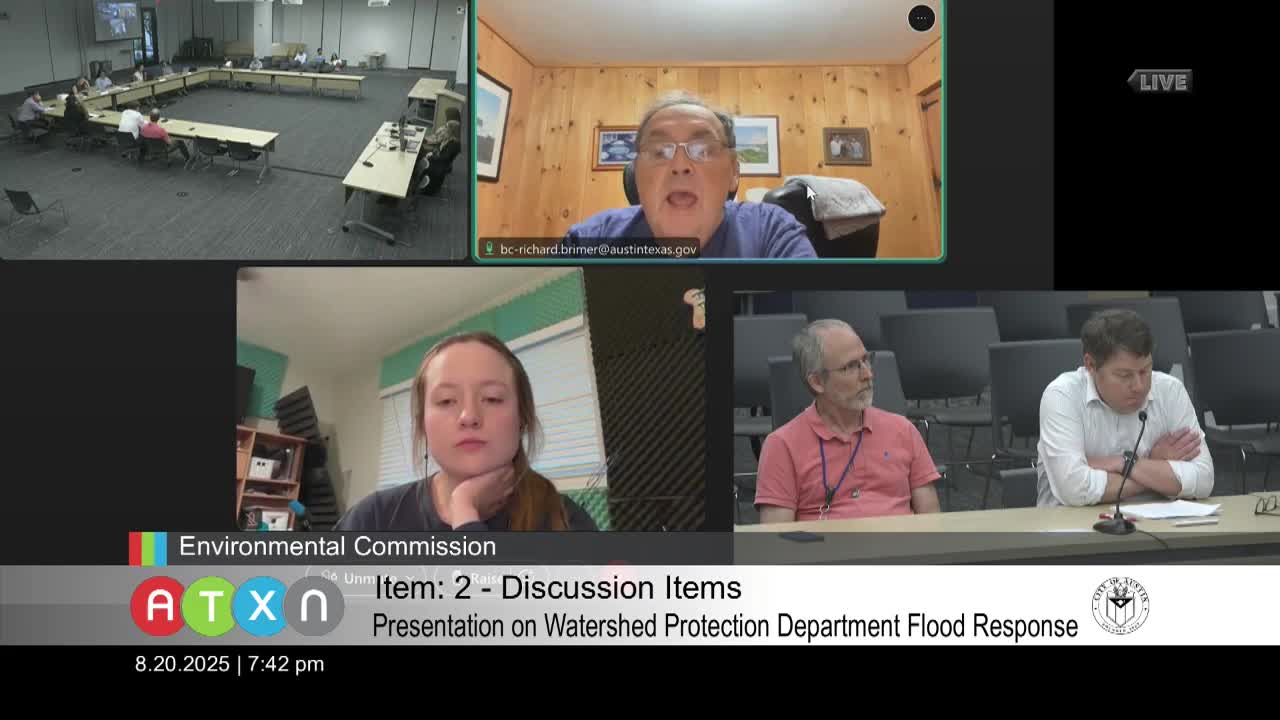City Officials Discuss Impervious Cover Limits to Address Flood Risks in Austin
August 20, 2025 | Austin, Travis County, Texas
Thanks to Scribe from Workplace AI , all articles about Texas are free for you to enjoy throughout 2025!

This article was created by AI using a video recording of the meeting. It summarizes the key points discussed, but for full details and context, please refer to the video of the full meeting. Link to Full Meeting
The resident raised a pressing question: Is the city considering changes to impervious cover limits in flood-prone watersheds to help mitigate flooding during heavy rainstorms? This inquiry highlighted a growing concern among residents about how urban development contributes to drainage issues and flooding risks in areas like Bull Creek and Walnut Creek.
City officials responded by acknowledging the current lack of communication or processes aimed at limiting zoning and impervious cover within the city’s zoning code. They emphasized that while some watersheds may already be heavily developed, understanding the relationship between soil saturation and runoff is crucial. The officials explained that Austin's soils are not very deep, which means they can only absorb a limited amount of water before becoming saturated. Once this saturation point is reached, additional rainfall leads to runoff similar to that caused by impervious surfaces.
The discussion underscored the importance of hydraulic modeling in assessing flood risks, taking into account the unique characteristics of Austin's soil and its implications for stormwater management. As the meeting concluded, the commissioners expressed gratitude for the insights shared, leaving the door open for future discussions on how to address these critical environmental challenges.
This dialogue reflects a growing awareness and urgency among Austin residents and officials alike to tackle the complexities of urban development and its effects on local ecosystems and flood management strategies.
Converted from Austin - Environmental Commission meeting on August 20, 2025
Link to Full Meeting
Comments
View full meeting
This article is based on a recent meeting—watch the full video and explore the complete transcript for deeper insights into the discussion.
View full meeting
